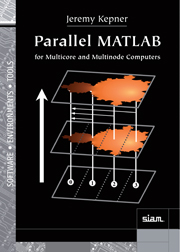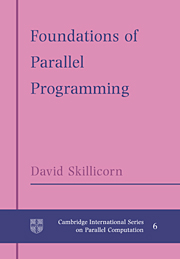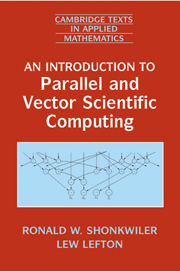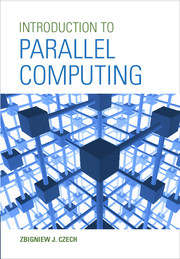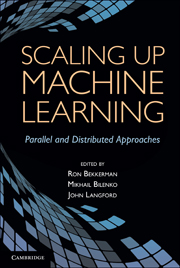Parallel MATLAB for Multicore and Multinode Computers
$85.99 (P)
Part of Software, Environments and Tools
- Author: Jeremy Kepner, Massachusetts Institute of Technology
- Date Published: July 2009
- availability: This item is not supplied by Cambridge University Press in your region. Please contact Soc for Industrial & Applied Mathematics for availability.
- format: Hardback
- isbn: 9780898716733
$
85.99
(P)
Hardback
Looking for an examination copy?
If you are interested in the title for your course we can consider offering an examination copy. To register your interest please contact [email protected] providing details of the course you are teaching.
-
This is the first book on parallel MATLAB and the first parallel computing book focused on the design, code, debug, and test techniques required to quickly produce efficient parallel programs. MATLAB is currently the dominant language of technical computing with one million users worldwide, many of whom can benefit from the increased power offered by inexpensive multicore and multinode parallel computers. MATLAB is an ideal environment for learning about parallel computing, allowing the user to focus on parallel algorithms instead of the details of implementation. This book is a reference for professional scientists and engineers and will also be beneficial to graduate students and advanced undergraduate students as a textbook for a parallel computing course.
Read more- This book covers more parallel algorithms and parallel programming models than any other parallel programming book due to the succinctness of MATLAB
- Promotes a 'hands on' approach with numerous examples
- Examples are drawn from widely known and well-documented parallel benchmark codes that are representative of many real applications across the field of technical computing
Customer reviews
Not yet reviewed
Be the first to review
Review was not posted due to profanity
×Product details
- Date Published: July 2009
- format: Hardback
- isbn: 9780898716733
- length: 273 pages
- dimensions: 261 x 182 x 21 mm
- weight: 0.68kg
- availability: This item is not supplied by Cambridge University Press in your region. Please contact Soc for Industrial & Applied Mathematics for availability.
Table of Contents
List of figures
List of tables
List of algorithms
Preface
Acknowledgments
Part I. Fundamentals:
1. Primer: notation and interfaces
2. Introduction to pMATLAB
3. Interacting with distributed arrays
Part II. Advanced Techniques:
4. Parallel programming models
5. Advanced distributed array programming
6. Performance metrics and software architecture
Part III. Case Studies:
7. Parallel application analysis
8. Stream
9. RandomAccess
10. Fast Fourier transform
11. High performance Linpack
Appendix. Notation for hierarchical parallel multicore algorithms
Index.
Sorry, this resource is locked
Please register or sign in to request access. If you are having problems accessing these resources please email [email protected]
Register Sign in» Proceed
You are now leaving the Cambridge University Press website. Your eBook purchase and download will be completed by our partner www.ebooks.com. Please see the permission section of the www.ebooks.com catalogue page for details of the print & copy limits on our eBooks.
Continue ×Are you sure you want to delete your account?
This cannot be undone.
Thank you for your feedback which will help us improve our service.
If you requested a response, we will make sure to get back to you shortly.
×
